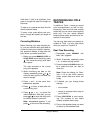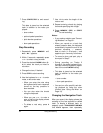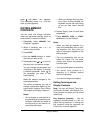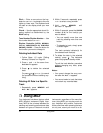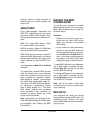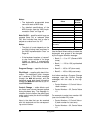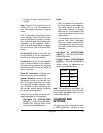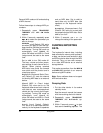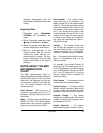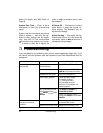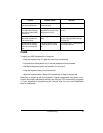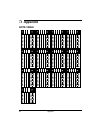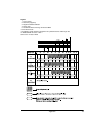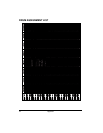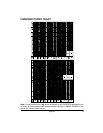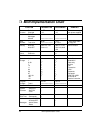
39Using MIDI
keyboard automatically exits the
data transfer mode after all the data
is sent.
Importing Data
1. Repeatedly press
TRANSPOSE/
TUNE/MIDI
until
BulkSnd?
ap-
pears.
2. Within 5 seconds, repeatedly press
or until
BulkRcv?
appears.
3. Within 5 seconds, press to pre-
pare the keyboard to receive data.
4. Start the send operation on the
sending device. See the owner’s
manual that comes with the con-
nected device for details. The key-
board automatically exits the data
transfer mode after all the data is
received.
NOTES ABOUT THE MIDI
IMPLEMENTATION
CHART
The “MIDI Implementation Chart” on
Page 46 illustrates the details of the key-
board’s MIDI function. An
O
in the chart
means that the keyboard has this fea-
ture;
X
means it does not have this fea-
ture. This section explains what the
keyboard can do.
Basic Channel
— MIDI uses up to 16
channels to exchange data. As in a TV
broadcast, different channels send dif-
ferent data.
Mode
— The chart shows that Mode 3 is
OMNI OFF, POLY. This means the key-
board sends and receives polyphonic
data on only one channel at a time.
Note Number
— This number repre-
sents each key of the keyboard. The
lowest number (0) is five octaves below
middle C. Since the keyboard’s lowest
note is two octaves below middle C and
the highest is three octaves above mid-
dle C, your keyboard can send a note
number between 36 and 96. But, it can
receive all 0 through 127 note numbers,
so those keys outside the keyboard’s
key range are interpreted as notes in-
side the key range.
Velocity
— This number shows how
fast the key was pressed, or how loud
the note should sound. 1 is the lowest
velocity, pianissimo; 127 is the loudest,
fortissimo. 0 means the key is released.
9n
— This means that the Note On mes-
sage is 9 hexadecimal, and n is the
channel number.
For example, if you select Channel 16
and press Key D in mezzo-piano, 9E (E
is 15 in hexadecimal; note that Channel
1 is 0 in MIDI data) is first sent from MIDI
OUT, then 3D (decimal 61) is sent as
the key number, finally 21 (decimal 33)
is sent as velocity.
Pitch Bender
— The keyboard sends
and receives pitch bending signals.
Control Change
— This feature sends
data on various controllers, each having
its own number. For the details of each
parameter, see “MIDI Data” on Page 35.
Program Change
— This feature
changes the preset sounds. Each sound
number corresponds to a program num-
ber between 0 and 127.
System Exclusive
— This feature
sends special signals unique to the key-



